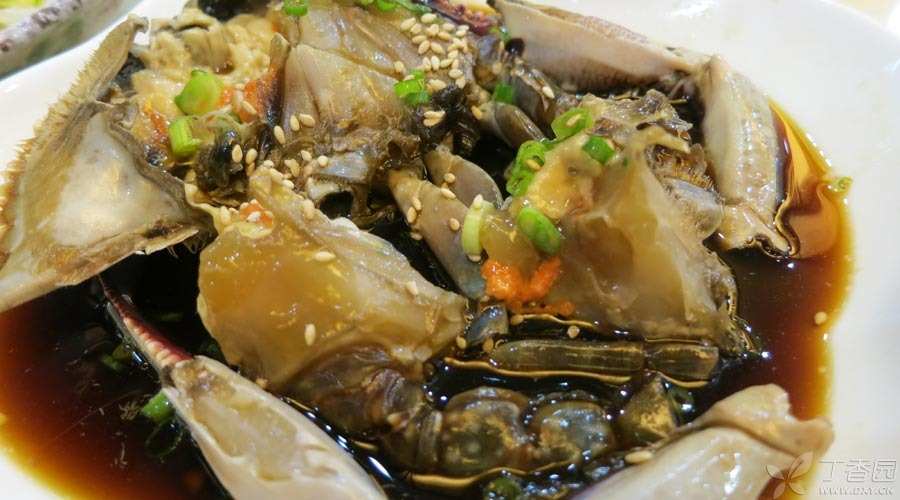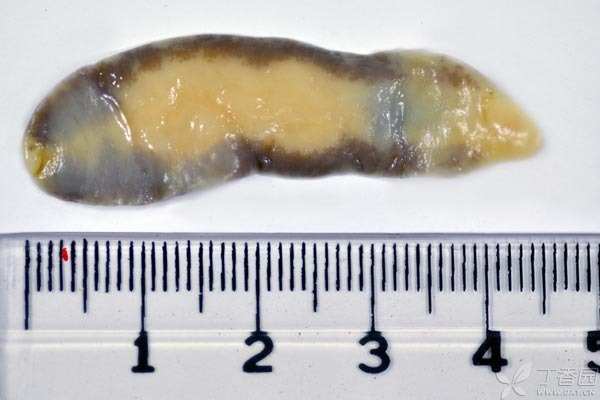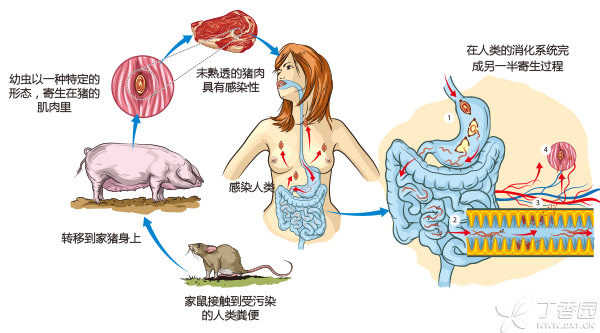
This greedy dish in the above picture, called “Drunken Crab”, is a famous delicacy in Jiangsu and Zhejiang provinces. The method is to break or cut raw crabs, soak them in cooking wine, soy sauce and other spices, and marinate them for several days.
Not only [drunk crabs], in recent years, people’s dietary preferences have become more and more [primitive]. People have an idea that [raw food] is the most nutritious. Sashimi, oysters and lettuce salads can be seen everywhere. Even raw beef and pork are willing to try.
People who love raw food believe that raw food is a purely natural way of eating, without heating and without damaging nutrients at all.
Is it really so good to eat raw? In fact, the safety risks of eating raw food are quite high and will not be more nutritious. When considering eating raw food, we must carefully consider and carefully measure it.
Is animal food at risk of what?
1. Pathogenic bacteria
Animal products such as raw meat and seafood and aquatic products are at risk of being contaminated by pathogenic bacteria during processing, storage and transportation.
The latest report of Interagency Food Safety Analysis Collaboration (IFSA) in the United States analyzed the food-borne diseases from 2008 to 2012 and found that the four pathogenic bacteria causing food poisoning were Escherichia coli, Salmonella, Campylobacter and Listeria.
The foods involved include chicken, beef, vegetables, fruits, dairy products and other common foods.
Common bacteria contaminate salmonella on raw eggs, Escherichia coli O157: H7 in raw beef, Vibrio vulnificus in raw oysters, etc.
2. Parasites
Another common safety problem with eating raw animal foods is parasites.
Common cases of liver fluke infection caused by eating river fish sashimi in China.

Fig. 1 ginger worm, parasitic in liver, can cause liver cirrhosis, bile duct blockage and other problems
Many people think that marine fish are safe. Since the sea water is salty, there will be no parasites.
In fact, even sashimi made of marine fish, It is not as safe as you think. In fact, marine fish may also carry parasites and have the same ability to infect humans. Among them, Anisakis is the most notorious. Salmon, salmon, tuna, sea bass, cod, hairtail, moray eel, grouper, herring, major bream and so on may all be infected by it. If eaten carelessly, they will be infected.
As for meat, many people now eat beef, pork sashimi, tapeworm-infected pork (commonly known as rice pork) or beef. If eaten carelessly, it will endanger human health. It is worth reminding here that we should avoid eating some pork slaughtered by [farmhouse] ourselves. The risks of these unquarantined pork are unknown.

Fig. 2 The whole process of growth and development of pork tapeworm in nature and human body
3. Viruses
There are three main types of viruses that can make people sick in food: gastroenteritis virus, hepatitis virus and other disease viruses.
The most typical is hepatitis A virus (HAV) infection. In the last century, there was an outbreak of hepatitis a in Shanghai, which was caused by eating undercooked [Scapharca subcrenata]. After that, [Scapharca subcrenata] was known to all in the epidemiological field.
Recently, there have been media reports of hepatitis a infection and liver failure caused by eating [seafood].
[Seafood Posture Creation] is a typical eating method in the southern region. It is famous because the eating method retains [the freshest part of seafood]. There is a description of it as follows: fried is not as good as fried, fried is not as good as steamed, steamed is not as good as rinse, and rinse is not as good as raw.
It is precisely because of this ignorant eating method that a new round of hepatitis a epidemic has been caused.
The main transmission route of hepatitis a is through eating food and water contaminated by feces. Shellfish aquatic animals are the main culprit in the transmission of hepatitis a. Shellfish aquatic animals generally refer to all aquatic animals with shells. Generally speaking, they can be divided into four categories, namely crustaceans (such as crabs, crayfish, lobsters and shrimps), gastropods (such as abalones), bivalves (such as oysters, clams and scallops) and cephalopods (such as squid). This is because they often live in easily polluted seawater and may carry hepatitis a virus.
Hepatitis a virus has strong resistance to heat. It can maintain infectivity in dry feces for up to 30 days at room temperature and survive for one hour in water at 60 degrees Celsius.
So, when eating seafood, If the seafood is not heated thoroughly or the contaminated seafood is eaten raw, There is a risk of contracting hepatitis a. However, When water and food are heated to 100 degrees Celsius, it can kill all hepatitis a virus in about 5 minutes. It should be emphasized that freezing, chili sauce, mustard, smoke, drinking, etc. cannot completely kill harmful bacteria, only sufficient heating can be used. Therefore, when eating, try to heat it until it is ripe, and it is best not to eat it raw.
Is plant food at risk of what?
Step 1 Be careful of latent pathogens
Eating raw vegetables is most susceptible to Escherichia coli.
Europeans like to eat salads made of all kinds of lettuce, but if they are not handled carefully, they will cause Escherichia coli infection. Thousands of people in the EU are infected by it every year. Patients suffer from acute gastroenteritis, often accompanied by vomiting and sometimes mild fever, mainly through contaminated food, water and contact with animals.
The Escherichia coli family is very large, They are not all bad, Most of them play an important role in maintaining the coordination of normal flora in human body. But enterohemorrhagic Escherichia coli is definitely notorious. In 2011, A major Escherichia coli infection occurred in Germany, with a total of more than 1,000 patients suffering from varying degrees of intestinal hemorrhage, ascites and renal failure, and dozens of deaths. After identification by doctors and microbiologists, these patients were diagnosed as enterohemorrhagic Escherichia coli infection, also known as EHEC infection, while the [real culprit] behind the scenes was enterohemorrhagic Escherichia coli.
Why is there such a serious Escherichia coli infection?
As mentioned just now, [eating raw] is an important reason. In order to pursue more nutrition, many European people like to eat raw potatoes, cucumbers and vegetable salads. In the outbreak in Germany, the German government finally banned people from eating raw tomatoes and potatoes in the near future.
2. Viruses
When it comes to viruses in plants, one cannot but mention [Norovirus].
Norovirus is also often called Norovirus. It is a common virus.
It can cause acute gastroenteritis, Norovirus outbreaks peak from November every year to April the following year. It is one of the major pathogens causing food-borne diseases. It causes about half of all food-borne diseases, according to the Centers for Disease Control and Prevention in the United States, a proportion that has been verified in other parts of the world. In Germany, 20,000 students were suspected to have been poisoned by norovirus from strawberry contamination.
Therefore, vegetables and fruits must be cleaned and try not to eat raw or half-eaten.
3. Natural toxins also exist in plants
-
Edible plants such as bitter almonds, bamboo shoots and their products, cassava and cassava products contain cyanoside and should not be eaten raw.
The Hong Kong Food Safety Center found that the cyanide content in common edible plants ranged from 9.3 to 330 mg per kilogram of bitter almond (apricot), bamboo shoots, cassava and flaxseed samples. Cyanoside itself is non-toxic, but when the plant cell structure is destroyed, the-glucosidase in cyanoside-containing plants can hydrolyze cyanoside to produce toxic hydrocyanic acid (cyanide).
Hydrocyanic acid can cause acute poisoning in human beings, and in severe cases it can lead to death. Therefore, the best choice for these foods just mentioned is not to eat them raw.
-
Many legume vegetables contain lectin and should not be eaten raw.
Every year, there are more food poisoning incidents caused by eating uncooked kidney beans in our country.
Raw or undercooked kidney beans are rich in erythrocyte agglutinin and saponins. These two biological toxins have the effects of erythrocyte agglutination and hemolysis respectively. After entering the human body, they play biological roles and cause diseases. Eating raw can cause nausea, vomiting and other symptoms, or even fatal.
Most of these foods can be thoroughly cooked to remove their toxicity.
Therefore, the most effective measure to prevent lectin poisoning in leguminous vegetables is to cook it thoroughly. Whether it is fried, stewed or cold mixed, it should be heated until the bean loses its original green color and has no beany smell when eaten. It should not covet color or crisp and tender taste and reduce cooking time.
Precautions for Raw Food
Although raw food has higher safety risks, many people still misunderstand that heating food will cause nutritional loss, which is not the case.
If you still want to eat raw after considering so much, you may as well remember these points:
- It is suggested to choose meat specially slaughtered and quarantined for raw food and buy vegetables specially grown for raw food. Pay attention to disinfection of related utensils and tools during processing, and separate raw and cooked utensils; When choosing raw food outside, try to choose a regular store. If you have any discomfort (abdominal pain, vomiting, constipation, anal pruritus, jaundice, fever, headache, etc.), please see a doctor as soon as possible and inform the doctor that you have ever eaten raw food.
Responsible Editor: Cat Capricorn
